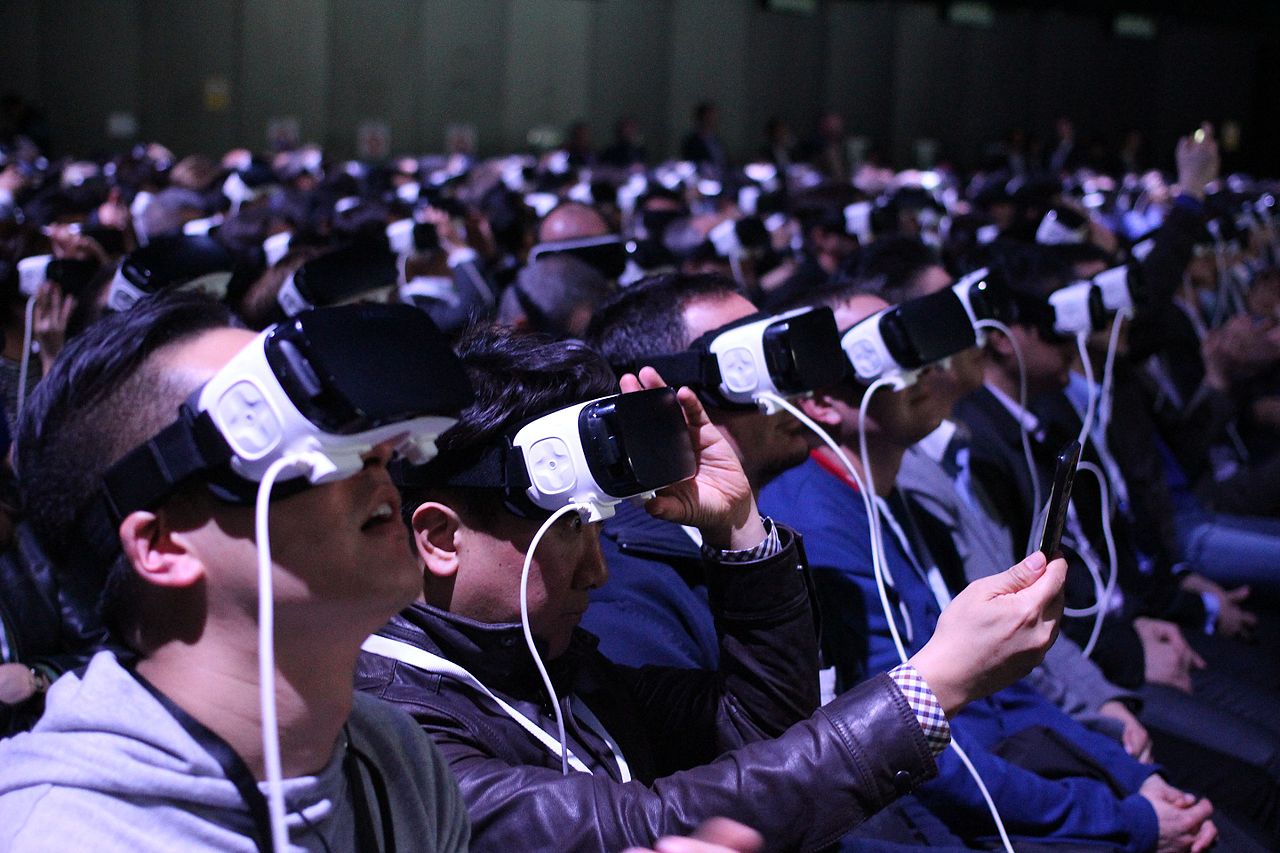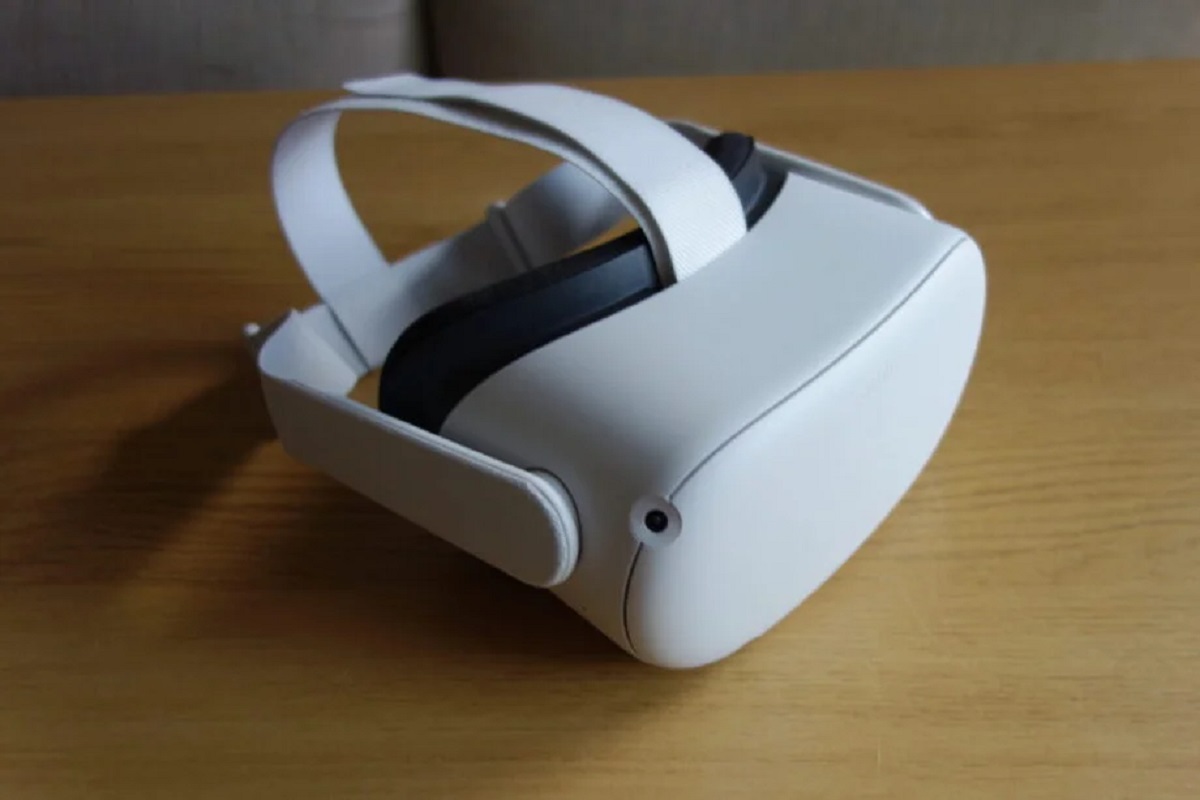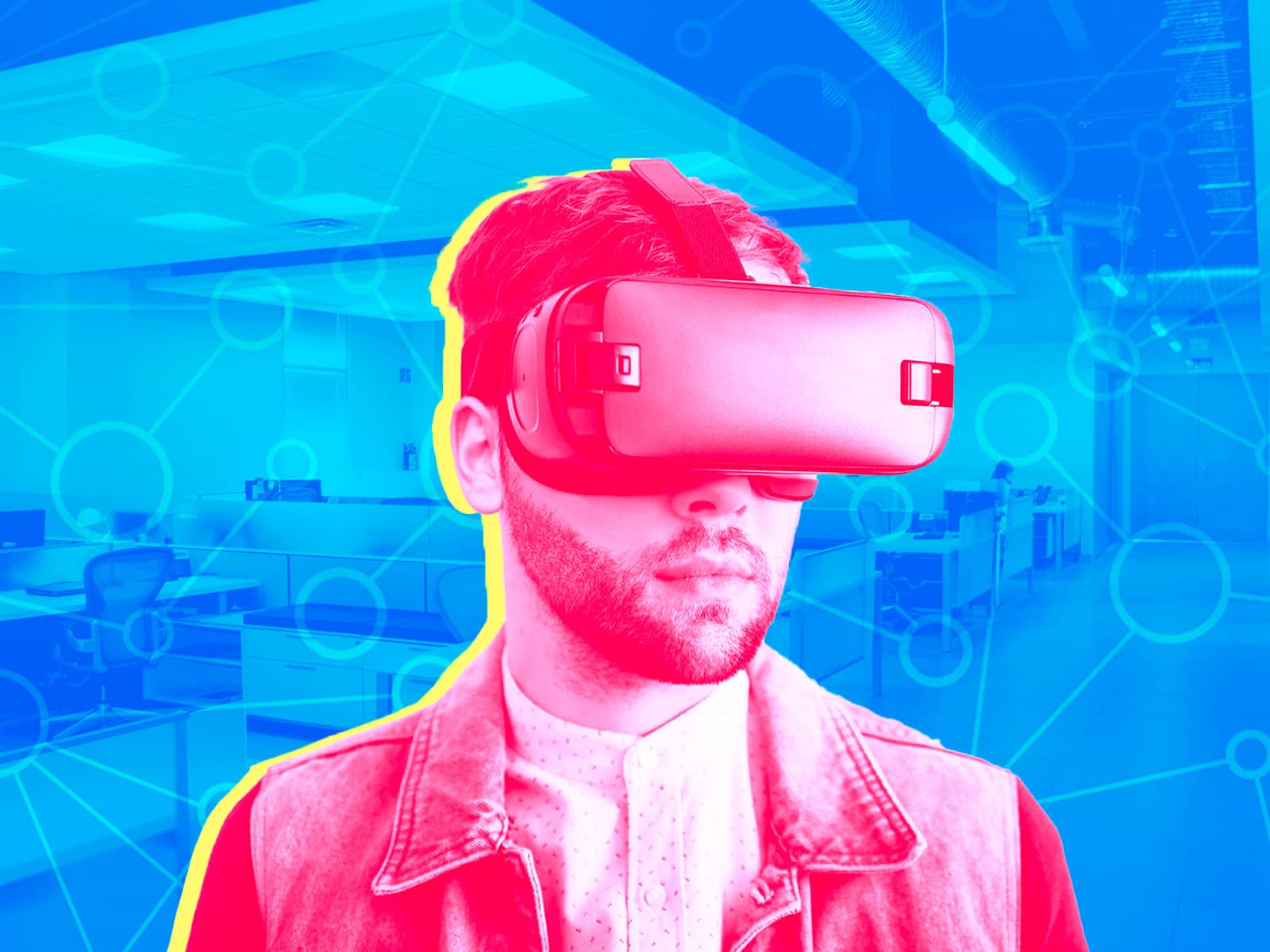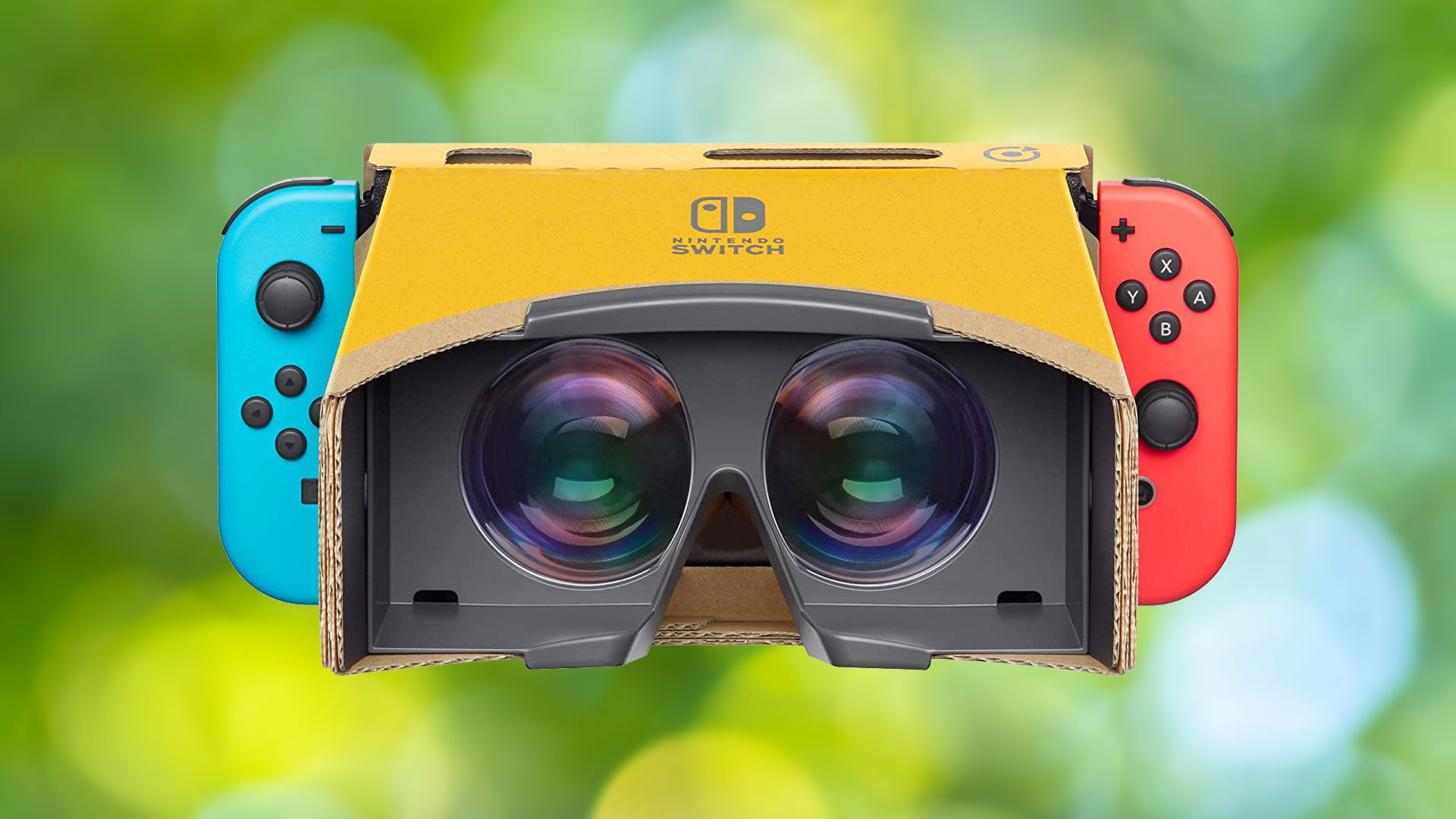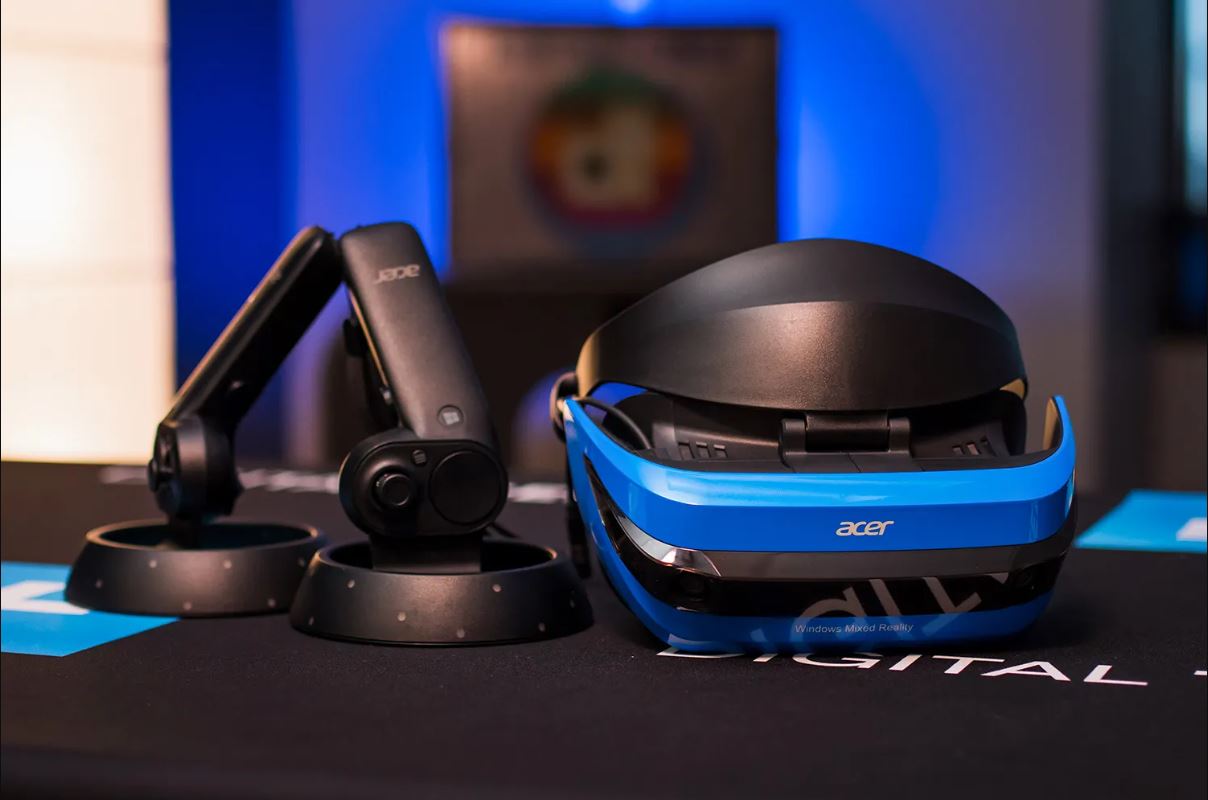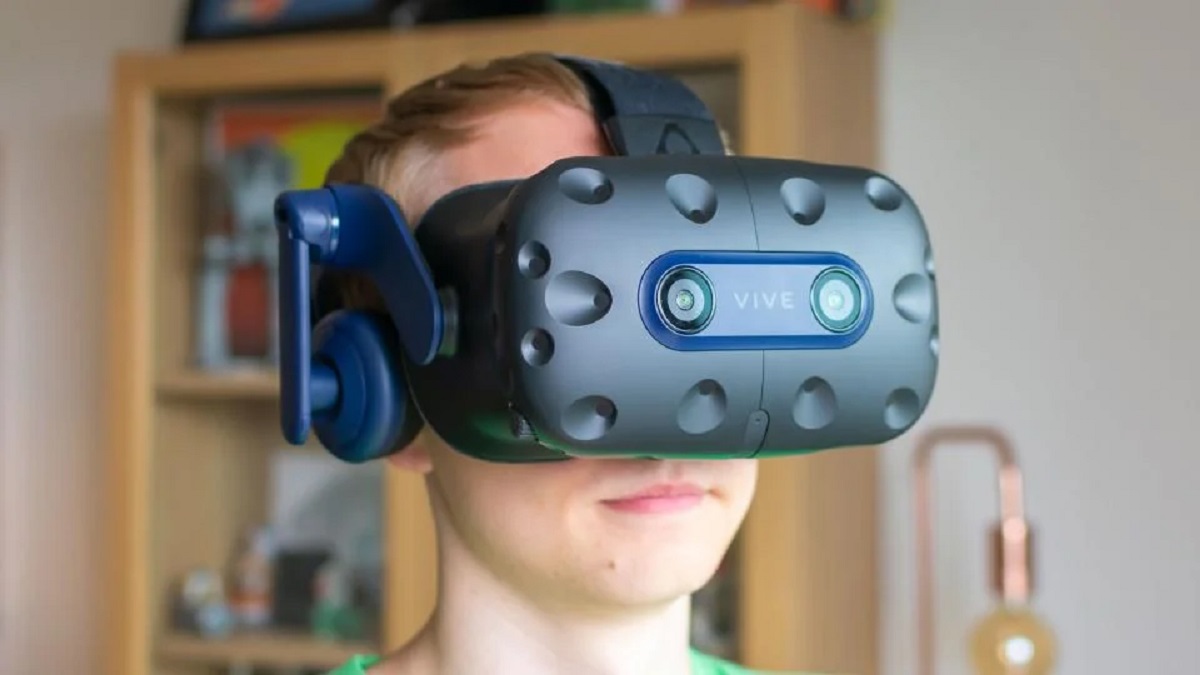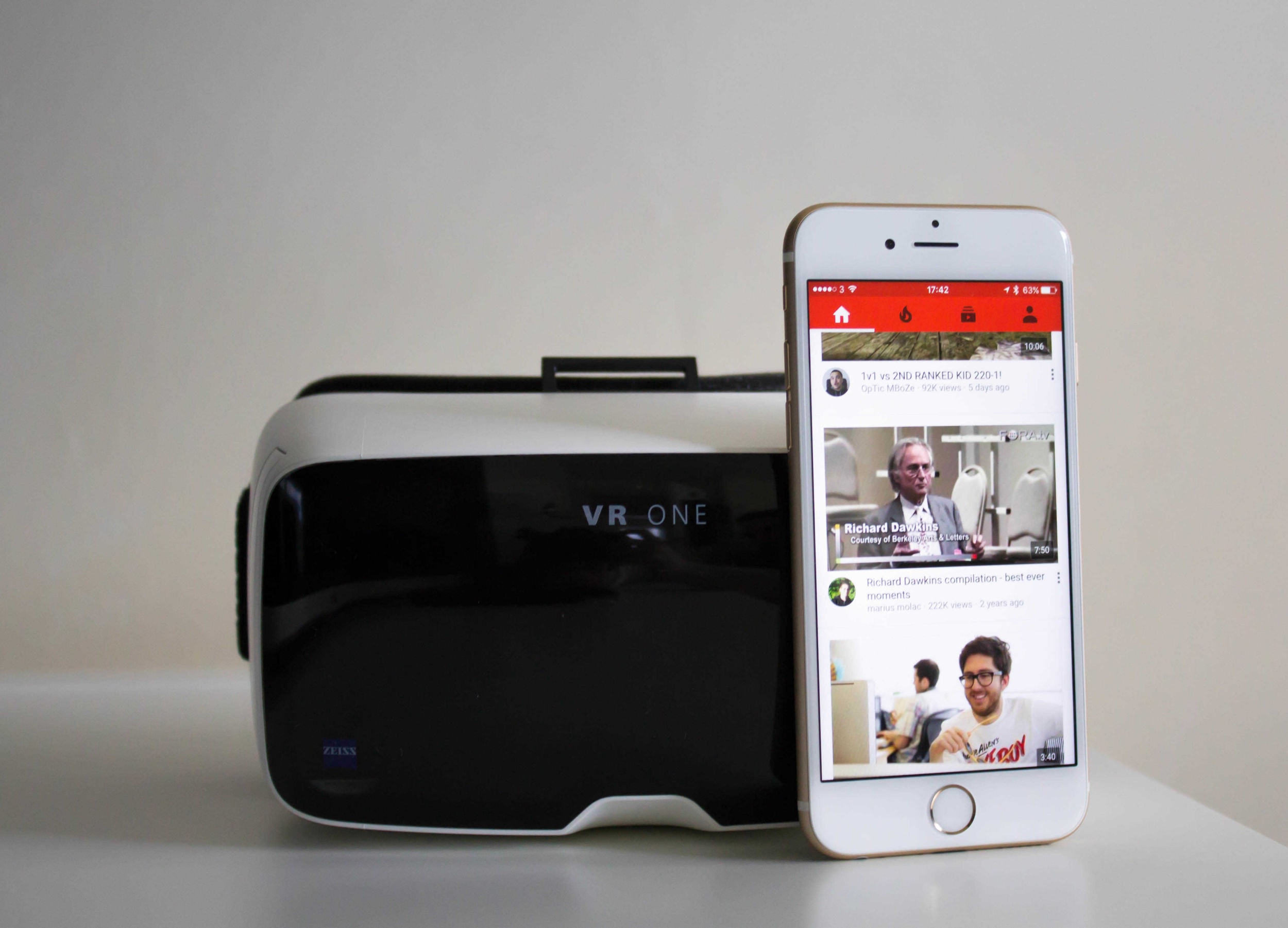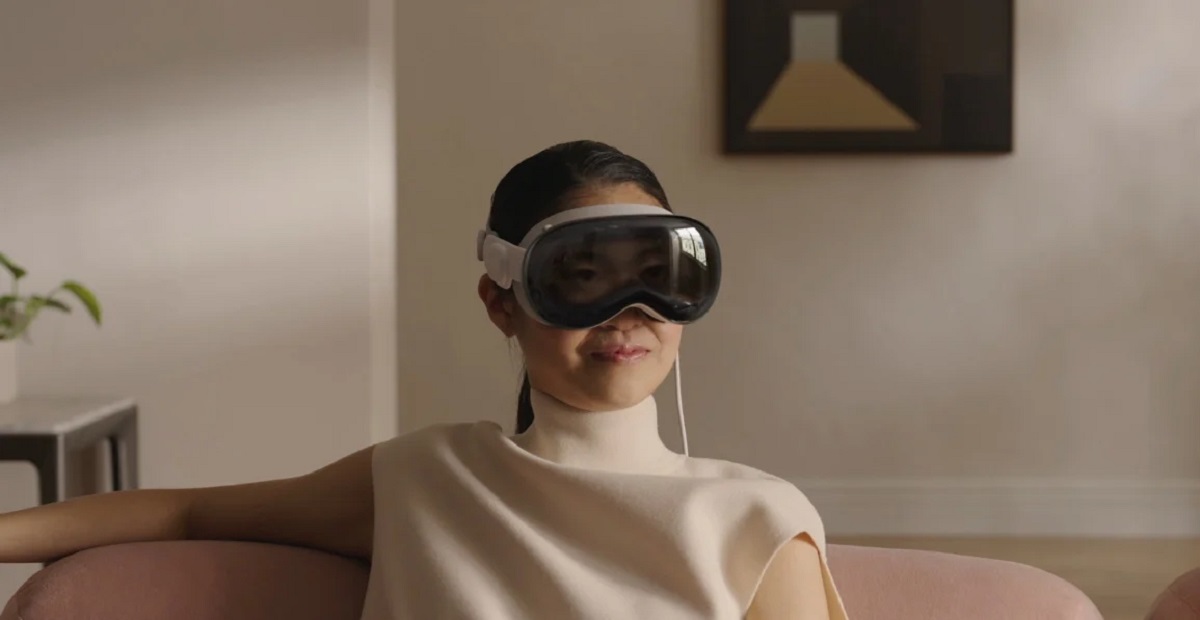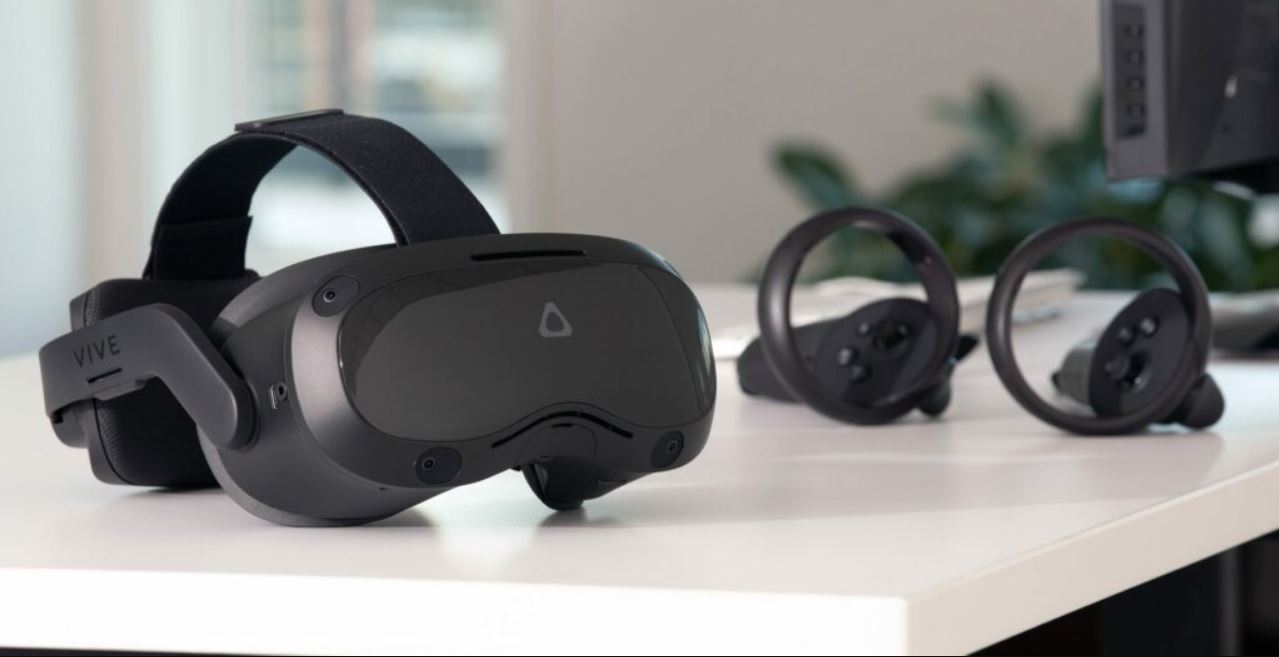Introduction
Virtual Reality (VR) technology has been a game-changer in various industries, and the entertainment sector is no exception. Virtual reality movies have emerged as a new and exciting medium that offers a unique experience to viewers. By immersing audiences in a virtual environment, these movies allow them to escape reality and become active participants in the stories unfolding before their eyes.
Unlike traditional movies that are watched on a screen, virtual reality movies provide a 360-degree view, enabling a more immersive and interactive experience. With the use of VR headsets, viewers can explore and engage with the virtual world, creating a sense of presence that traditional films cannot match.
Virtual reality movies have gained popularity due to their ability to transport audiences to places and situations that would otherwise be impossible to experience. Whether it’s diving into the depths of the ocean, soaring through space, or witnessing historical events, VR movies offer a level of realism and intensity that can be truly awe-inspiring.
Beyond the thrill of the immersive experience, virtual reality movies also have the potential to evoke strong emotional responses. By allowing viewers to step into the shoes of characters and witness events firsthand, VR films can elicit empathy and create a deeper connection between the audience and the story being told. These emotional engagements make virtual reality movies a powerful medium for storytelling, capable of leaving a lasting impact on the viewers.
One of the key advantages of virtual reality movies is their ability to push the boundaries of traditional filmmaking techniques. Filmmakers can experiment with new camera angles, perspectives, and visual effects to create truly unique and captivating cinematic experiences. With VR, the lines between traditional filmmaking and interactive storytelling begin to blur, opening up a world of creative possibilities for filmmakers and viewers alike.
Moreover, virtual reality movies have also found profound applications in education and training. VR can simulate realistic scenarios, allowing students or professionals to practice and develop their skills in a safe and controlled environment. For example, medical schools can use VR to train aspiring doctors, while flight schools can provide virtual flight simulations for trainee pilots. The immersive nature of virtual reality movies enhances the learning experience and enables users to gain practical knowledge in a way that traditional methods cannot.
Immersive Experience
One of the defining features of virtual reality movies is the immersive experience they offer to viewers. Unlike traditional films where audiences are mere spectators, VR movies allow them to step into the story and actively participate in the narrative.
Through the use of VR headsets, viewers are transported to a virtual environment that surrounds them from all angles. The 360-degree view creates a sense of presence and makes them feel as if they are truly part of the movie. This level of immersion allows audiences to become fully engrossed in the story and enhances their emotional connection with the characters and events.
In a virtual reality movie, viewers can explore the virtual world freely, directing their attention to different parts of the scene. They can choose to focus on the main characters, examine the surroundings, or even discover hidden details that would otherwise go unnoticed in a traditional film. This freedom of exploration adds an element of interactivity and personalization to the movie-watching experience.
The immersive experience offered by virtual reality movies is not limited to the visual aspect. Sound plays a crucial role in creating a convincing virtual environment. Through spatial audio technology, viewers can hear sounds coming from different directions, allowing for a more realistic and immersive auditory experience. This further enhances the sense of presence and transports viewers into the heart of the action.
By immersing audiences in a virtual world, VR movies have the power to evoke a wide range of emotions. Whether it’s fear, excitement, joy, or sadness, the immersive nature of virtual reality amplifies the emotional impact of the story. Viewers feel as if they are directly involved in the events unfolding before them, leading to a heightened sense of empathy and connection with the characters.
The immersive experience of virtual reality movies has the potential to revolutionize the way we consume and engage with film. It opens up new possibilities for storytelling, inviting audiences to become active participants rather than passive observers. The ability to step into a different reality and experience events firsthand is a truly transformative experience that sets virtual reality movies apart from traditional films.
Emotional Engagement
Virtual reality movies have a unique ability to elicit strong emotional responses from viewers. By immersing audiences in a virtual world and allowing them to experience events firsthand, these movies create a deep emotional connection between the viewers and the story being told.
Traditional movies often rely on dialogues, facial expressions, and cinematography to evoke emotions. However, virtual reality movies take this a step further by providing an immersive and interactive experience that taps into all the senses. With the ability to see, hear, and even feel the virtual world, viewers are more deeply engaged on an emotional level.
For example, imagine watching a virtual reality movie set in a war zone. As the viewer, you are surrounded by the chaos and devastation, hearing the gunfire and feeling the vibrations of explosions. The intensity and realism of the experience can evoke fear, empathy, and a deep emotional connection with the characters who are living through these events.
In addition to the immersive sensory experience, virtual reality movies often provide opportunities for viewers to make choices and affect the outcome of the story. These interactive elements further enhance emotional engagement, as viewers feel a sense of responsibility and connection to the characters and the decisions they make.
The emotional impact of virtual reality movies is not limited to fictional narratives. Documentaries and real-life experiences can be equally compelling in the virtual reality medium. For example, a virtual reality documentary about a humanitarian crisis can invoke empathy and a desire for social change in viewers as they witness the struggles of those affected.
Furthermore, virtual reality movies have the potential to help people experience situations and emotions that they may not encounter in their everyday lives. It can provide a safe space for individuals to confront their fears, such as heights or public speaking, in a controlled and supportive environment. This therapeutic aspect of virtual reality movies can help individuals overcome phobias and anxieties by gradually exposing them to their fears in a virtual setting.
Overall, the emotional engagement offered by virtual reality movies is a key factor in their growing popularity. The ability to transport viewers to different realities and evoke genuine emotions enhances the storytelling experience and creates a lasting impact on the audience.
Storytelling Possibilities
Virtual reality movies present a whole new realm of possibilities when it comes to storytelling. The immersive nature of VR technology allows filmmakers to craft narratives in ways that were previously unimaginable. With this revolutionary medium, storytelling becomes more interactive, engaging, and personal for viewers.
One of the notable advantages of virtual reality movies is the ability to place the audience directly within the story. Instead of watching events unfold from a distance, viewers can step into the shoes of the protagonist and experience the story from their perspective. This creates a deeper level of empathy and investment in the narrative, enhancing the overall storytelling experience.
In addition to the personal connection, virtual reality movies provide opportunities for viewers to explore different storylines and outcomes. Interactive elements within the VR experience allow users to make choices that shape the direction of the story. This level of agency gives viewers a sense of ownership and involvement, making them active participants in the narrative. As a result, each viewer may have a unique and personalized experience of the story.
The use of spatial audio in virtual reality movies further enhances storytelling possibilities. By manipulating soundscapes and creating immersive audio environments, filmmakers can guide the audience’s attention and enhance the emotional impact of the story. This multidimensional approach to storytelling adds an extra layer of immersion and engagement.
Virtual reality movies also have the potential to break free from traditional linear storytelling. Filmmakers can experiment with non-linear narratives and explore different timelines and perspectives. This allows for a more dynamic and interactive experience, where viewers can choose the order in which they experience different parts of the story. Such non-linear storytelling can deepen the sense of discovery and create a more engaging and unpredictable viewing experience.
Furthermore, virtual reality movies offer novel ways to convey information and create visual metaphors. Filmmakers can utilize the immersive capabilities of VR to visually represent abstract concepts or emotions. Through visual cues and interactive elements, viewers can actively explore and interpret the underlying messages of the story.
Overall, virtual reality opens up a world of possibilities for storytelling. It empowers filmmakers to create narratives that not only entertain but also deeply involve and engage the audience. The combination of immersion, interactivity, and innovative approaches to storytelling makes virtual reality movies an exciting medium for filmmakers and viewers alike.
Educational and Training Tools
Virtual reality movies have proven to be effective educational and training tools in various fields. The immersive nature of virtual reality allows users to learn and practice real-world skills in a safe and controlled environment. This innovative use of technology has paved the way for new and exciting educational opportunities.
In fields such as medicine and healthcare, virtual reality movies are being utilized to train aspiring doctors, nurses, and surgeons. Medical students can practice surgical procedures, diagnose patients, and experience medical scenarios without the risk of harming real patients. This immersive training allows for a more realistic and hands-on learning experience, enhancing confidence and proficiency.
Similar applications can be found in other professional fields. Flight simulators have long been used to train pilots, but virtual reality takes this training to new heights by providing a fully immersive environment. Trainee pilots can simulate takeoffs, landings, and emergency situations while experiencing the visual and auditory cues of a real flight. This hands-on training can significantly improve skills and decision-making in a safe and cost-effective manner.
Virtual reality movies have also been effective in enhancing the learning experience for students in various academic subjects. For example, history students can virtually travel back in time and witness historical events unfold. This experiential learning allows for a deeper understanding and engagement with the subject matter. Similarly, virtual reality can be used to explore scientific concepts, geography, and other subjects in a more interactive and immersive way.
Beyond traditional education, virtual reality movies are increasingly being utilized in corporate training. Companies can simulate real-life scenarios and provide employees with the opportunity to practice skills and make decisions in a virtual environment. This type of training can be particularly valuable in industries such as healthcare, emergency response, and customer service, where practical experience is vital.
Furthermore, virtual reality movies can play a significant role in improving accessibility in education. Students with disabilities can benefit from virtual simulations and experiences that would otherwise be challenging or impossible for them to access. Virtual reality can provide equal learning opportunities and inclusivity for all students.
Overall, virtual reality movies have immense potential as educational and training tools. They offer a safe and immersive environment for learners to practice skills, explore new concepts, and engage with educational content. As the technology continues to evolve, virtual reality is poised to revolutionize the way we learn and train in various fields.
Enhancing Film Techniques
Virtual reality movies are not only transforming the way we watch films but also pushing the boundaries of traditional film techniques. Filmmakers can leverage the immersive nature of VR technology to create captivating and innovative cinematic experiences that were previously unimaginable.
One of the key advantages of virtual reality movies is the ability to experiment with new camera angles and perspectives. Traditional films are limited to a fixed frame that the audience passively observes. In virtual reality, filmmakers can place the viewer’s perspective anywhere within the 360-degree environment, providing a sense of presence and control over the viewing experience. The freedom to explore the scene from different angles adds a new level of immersion and engagement to the storytelling process.
Moreover, virtual reality movies offer exciting possibilities for visual effects and CGI. With the use of virtual reality technology, filmmakers can seamlessly integrate computer-generated elements into the virtual world, creating stunning and realistic visual experiences. From fantastical creatures to elaborate and immersive environments, virtual reality allows for a more seamless blending of the real and the virtual.
Sound is another crucial aspect that can be enhanced in virtual reality movies. Spatial audio technology enables filmmakers to create an immersive sound experience where the intensity and direction of sound are accurately matched to the viewer’s perspective. By using three-dimensional audio, filmmakers can guide the audience’s attention and create a more encompassing and realistic audio environment.
Traditional films often rely on editing techniques to convey the passage of time or transition between scenes. In virtual reality movies, these transitions can be seamless and natural. Filmmakers have the freedom to transport viewers from one location to another, creating a sense of continuity and flow without the need for traditional cuts or edits. This fluidity enhances the overall immersion and allows for a more seamless storytelling experience.
Virtual reality expands the possibilities for storytelling beyond the limitations of a screen. Filmmakers can create multidimensional environments where the story unfolds in all directions, captivating the audience’s attention at every turn. The use of depth, scale, and interactive elements within the virtual environment opens up new avenues for storytelling, blurring the lines between traditional filmmaking and interactive experiences.
With virtual reality movies, filmmakers have the opportunity to create truly immersive and transformative cinematic experiences. By pushing the boundaries of traditional film techniques, they can captivate audiences in new and exciting ways, making the viewing experience more engaging, immersive, and visually stunning.
Expanding Audience Reach
Virtual reality movies have the potential to reach a wider and more diverse audience than traditional films. By providing an immersive and engaging viewing experience, virtual reality opens up opportunities to captivate viewers who may not typically engage with traditional forms of media.
One of the key advantages of virtual reality movies is their ability to break down geographical barriers. Unlike traditional films that require physical theaters or screens, virtual reality movies can be accessed and experienced from anywhere in the world. With the increasing availability of VR headsets and mobile VR devices, viewers can enjoy immersive content from the comfort of their own homes. This accessibility allows filmmakers to reach global audiences and enables viewers in remote locations to experience films they may not have otherwise had access to.
Moreover, virtual reality movies have the potential to attract new demographics of viewers. The immersive nature of the medium appeals to tech-savvy audiences who are eager to experience the latest advancements in entertainment technology. Additionally, virtual reality movies can engage younger generations who are accustomed to interactive and immersive experiences through video games and other digital media.
Virtual reality also offers opportunities for social viewing experiences. While traditional films are typically viewed individually or in small groups, virtual reality movies can be enjoyed in virtual environments where multiple users can come together and share the experience. This social aspect adds a new dimension to the film-watching experience, allowing viewers to connect with friends, family, or even strangers from different parts of the world.
Another benefit of virtual reality movies is their potential for inclusion and representation. Filmmakers can create virtual worlds and characters that reflect diverse cultures, perspectives, and experiences. This inclusivity has the power to resonate with audiences who are seeking representation and inclusion in the media they consume.
Furthermore, virtual reality movies can also appeal to niche audiences with specific interests or preferences. Filmmakers can cater to different genres, niches, or specialized subject matters, providing an immersive experience tailored to the audience’s preferences. This customization and personalization of content can enhance audience engagement and create a loyal following of viewers.
Overall, virtual reality movies have the potential to expand the reach and appeal of film to new audiences. By breaking down geographical barriers, attracting tech-savvy viewers, offering social viewing experiences, promoting inclusivity, and catering to niche interests, virtual reality has the power to captivate and engage a broader range of viewers than traditional films.
Potential for Interactivity
One of the most exciting aspects of virtual reality movies is the potential for interactivity. Unlike traditional films where viewers passively watch the story unfold, virtual reality movies allow for active engagement and participation in the narrative.
Interactivity in virtual reality movies can take various forms. For example, viewers may have the ability to make choices that influence the direction of the story. These choices can range from simple decisions that affect the outcome of a scene to more complex branching narratives that offer multiple story paths. This level of agency and involvement empowers viewers to shape their own unique experience of the film.
Furthermore, virtual reality movies can incorporate interactive elements within the virtual environment. Viewers can interact with objects, characters, or the surrounding environment, adding a tactile and sensory dimension to the experience. This interactivity enhances immersion and allows for a more dynamic and engaging viewing experience.
In addition to narrative-driven interactivity, virtual reality movies have the potential to involve viewers in collaborative storytelling experiences. Multiple users can come together in virtual environments to interact, communicate, and collectively shape the narrative. This social interactivity creates a sense of shared presence and fosters a collaborative and participatory storytelling experience.
Virtual reality movies can also incorporate gamification elements, blurring the boundaries between film and video games. Viewers can be challenged with puzzles, tasks, or quests within the virtual environment, encouraging active problem-solving and engagement. This gamified approach to storytelling adds an extra layer of interactivity and immersion, appealing to audiences who enjoy interactive gaming experiences.
With the advancement of virtual reality technology, there is also potential for real-time interaction and live events in virtual reality movies. Filmmakers can create live virtual reality experiences where viewers can join in real-time discussions, Q&A sessions, or even interact with characters and performers. This live interactivity adds an exciting and dynamic element to the film-watching experience, bridging the gap between audiences and creators.
Overall, the potential for interactivity in virtual reality movies opens up a new realm of possibilities for storytelling. Whether through narrative choices, environmental interaction, collaborative experiences, or gamification, interactivity adds a layer of engagement and personalization that sets virtual reality movies apart. As the technology continues to evolve, the potential for even more immersive and interactive cinematic experiences will only grow.
Conclusion
Virtual reality movies have emerged as an exciting and transformative medium in the entertainment industry. Their immersive nature, ability to evoke emotions, and unique storytelling possibilities make them a captivating and engaging experience for viewers. From providing an escape from reality to enhancing educational and training tools, virtual reality movies have the potential to revolutionize the way we consume and interact with film.
The immersive experience offered by virtual reality movies allows viewers to step into the story and become active participants, creating a deeper emotional connection and sense of presence. By leveraging new film techniques and pushing the boundaries of traditional storytelling, virtual reality movies captivate audiences with visually stunning and innovative narratives. The potential for interactivity further enhances the viewing experience, allowing viewers to shape the story and engage with the virtual environment.
Beyond entertainment, virtual reality movies have found applications in various fields, including education and training. Their ability to offer realistic simulations and hands-on experiences makes them valuable tools for learning and skill development. The accessibility of virtual reality movies also expands their reach to global and diverse audiences, bridging geographical barriers and appealing to new demographics.
As technology continues to evolve, the potential for virtual reality movies only grows. The integration of virtual reality in mainstream filmmaking will continue to push boundaries, enhance storytelling techniques, and captivate audiences in new and exciting ways. With its power to transport viewers to different realities and create transformative experiences, virtual reality is poised to reshape the future of filmmaking and entertainment.







